Preparing for Your First Modelling Photoshoot
Whether it’s your first modelling gig or you’ve been at it for a while, preparing for a photoshoot can be both exciting and nerve-wracking. Knowing what to expect and how to approach the day can help you walk into the studio feeling confident, poised, and ready to perform.
This guide will take you through the most important steps, from mental preparation to the nitty-gritty of what to bring and how to pose, ensuring you’re fully prepared to deliver your best work.

Step 1: Understand the Brief and Client Expectations
First things first; make sure you know exactly what the photoshoot is for. This might seem obvious, but it’s critical to know the purpose of the shoot and what the client is looking to achieve. Are they promoting a clothing line? A beauty product? A fitness campaign? The type of shoot will dictate everything from your look to the way you pose, so understanding the brand and their target audience is key.
Ask questions if you’re not sure about something. What vibe or style are they going for? Are there specific poses or moods they want you to convey? The clearer the brief, the more focused you’ll be on shoot day.
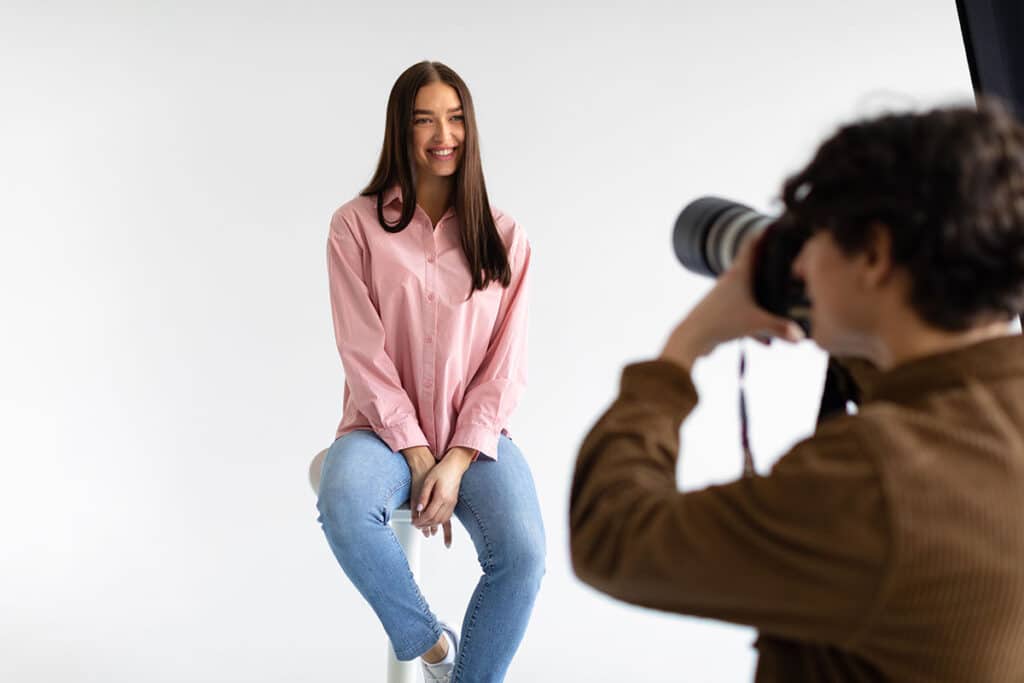
Step 2: Research the Brand and Photographer
Once you’ve got the brief, it’s time to do some homework. Look up the brand, its social media, and previous campaigns to get a feel for the style they’re after. If it’s a fashion label, what kind of clothes do they typically showcase? Do they go for a clean, minimalist aesthetic, or is it more street style and edgy? This context will help you visualise how you’ll need to present yourself.
You’ll also want to check out the photographer’s previous work. Every photographer has a different style, and understanding this will help you work better with them. Some photographers give lots of direction, while others may expect you to know how to move without much guidance. You can usually get a good sense of this from their portfolio or Instagram.
Pro Tip: If you’re not feeling 100% confident about the photographer’s style, practice poses that fit their previous work. That way, you’re ready to hit the ground running when you arrive.
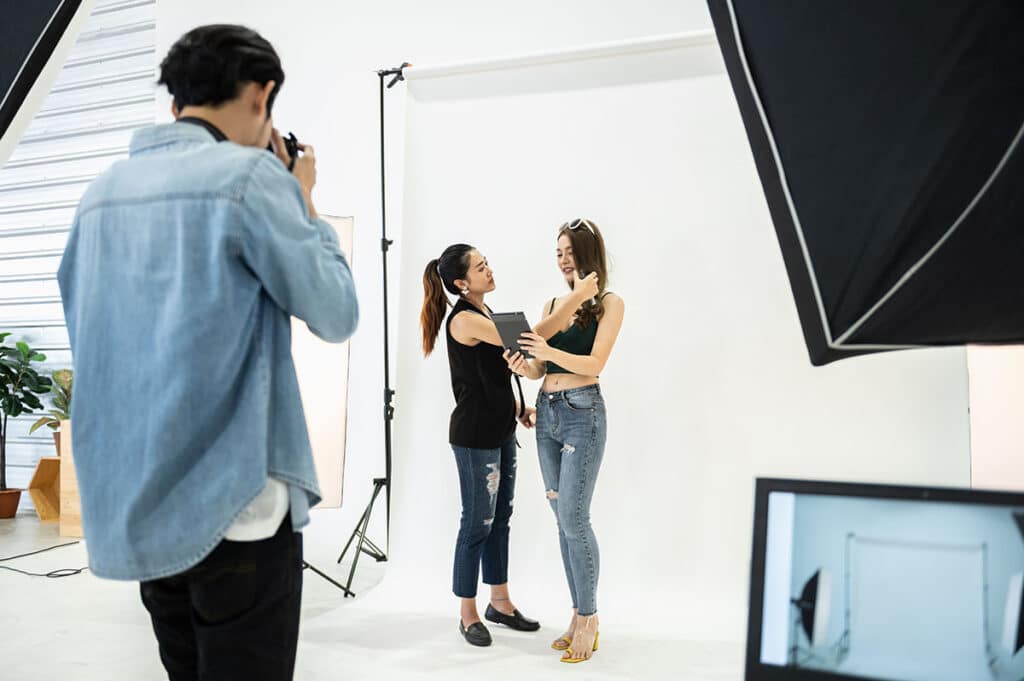
Step 3: Perfect Your Wardrobe and Styling
Wardrobe is everything when it comes to nailing a modelling photoshoot, and what you wear needs to align with the brand’s vision. The client will most usually provide outfits, but for interviews and casting calls and on very rare occasions, you may be expected to bring a selection of your own.
How to Choose the Right Outfits:
- Stick to the Brief: If the client is a high-fashion label, opt for sleek, structured outfits. If it’s a lifestyle brand, think casual and relatable – like jeans and a well-fitted top.
- Avoid Overbranding: Unless they’ve requested it, try to steer clear of logos and brand names on your clothing.
- Neutral Tones vs. Bold Colours: For portfolio shoots or jobs where you need versatility, neutrals like black, white, grey, and beige often work best. However, if the brand loves colour, don’t be afraid to show some personality with bold pieces.
Bring a range of options, including different layers, textures, and accessories, to give the photographer more variety to work with.
Wardrobe tip: Nude, seamless and well-fitting underwear is essential, especially for outfits where visible lines might be an issue. You’ll also want to bring shoes that match the outfits you’ve packed; don’t assume the studio will have everything on hand!
Insider knowledge: Often, a brand will have shoes but won’t have all the sizes, forcing some models to wear shoes that don’t fit, which can be very uncomfortable! And if a brand wants you to try on swimwear, you may have to try on clothing that has been worn (and likely not washed) by multiple people; that’s why it’s always a good idea to bring some small, barely visible hygiene underwear to wear on these occasions.
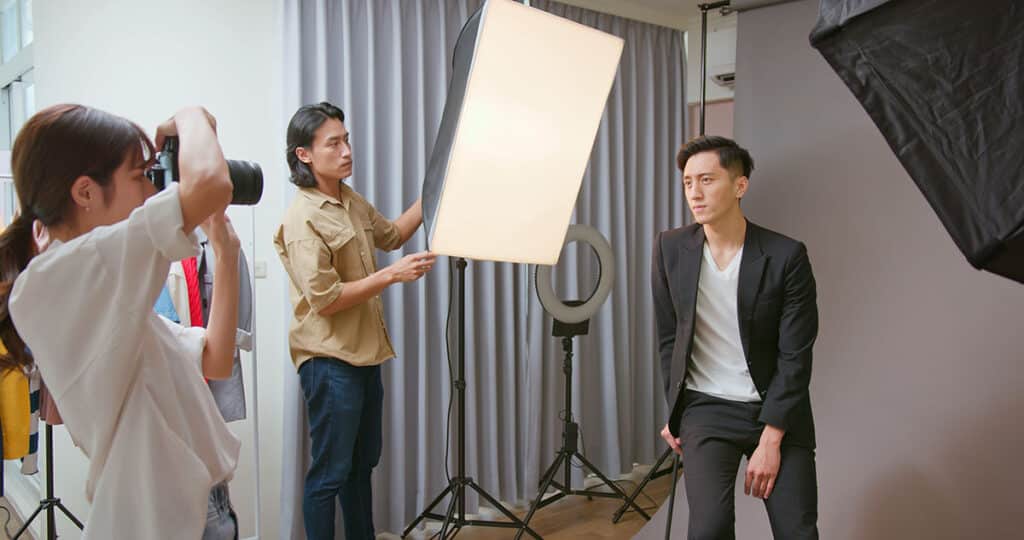
Step 4: Prep Your Skin, Hair, and Nails
Being a model is all about showcasing the best version of yourself, so grooming is extremely important.
Skincare:
Hydrate and moisturise your skin in the days leading up to the shoot. Even if you’re wearing makeup for the shoot, good skin is always easier to work on (not only for the make-up artist, but for post-editing, too). Avoid trying new skincare products right before the shoot to avoid unwanted reactions. Stick to what works, and drink plenty of water to give your skin a natural glow.
Hair:
Make sure your hair is clean and styled according to the client’s preferences. Some shoots will have a hair stylist on set, but unless specified, it’s safer to arrive with it neatly styled and ready to go.
Nails:
Keep them neat, trimmed, and preferably in neutral shades. Bright colours can clash with outfits and may be distracting in the final shots unless requested by the client.
Body:
Unless told otherwise, it’s best for female models to shave underarms and legs. Be sure to arrive freshly-showered and use a skin moisturiser (make sure to really focus on any dry areas).
Feet:
A clean pedicure is a great finishing touch. Be sure to slough off any dry skin and moisturise well the night before the shoot.
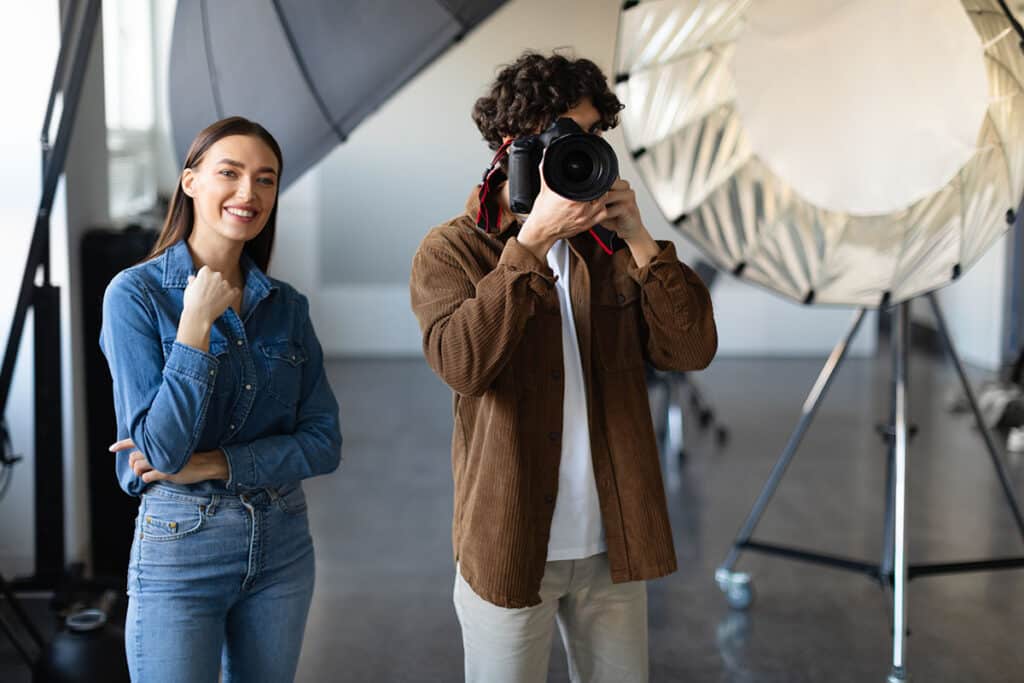
Step 5: Practice Your Poses
No matter how much direction you get from the photographer, knowing how to pose will make a huge difference in how well the shoot goes. The key to good posing is movement – you want to avoid stiff, unnatural postures that make you look uncomfortable.
Tips for improving your poses:
- Practice in front of a mirror: See how your body moves, which angles work best for you, and what expressions feel most natural.
- Study professional models: Watch runway shows, editorial shoots, and Instagram reels of top models to see how they work the camera.
- Work on your “flow”: Many experienced models will shift into different poses fluidly—this can help create dynamic, interesting shots that require minimal direction from the photographer.
Step 6: Get Plenty of Rest and Hydration
In the days leading up to the shoot, focus on taking care of your body. Modelling can be physically demanding – especially for long shoots where you’re changing outfits and holding poses for extended periods.
- Sleep: Get at least 7-8 hours of sleep the night before to ensure you look rested and alert. Tiredness shows quickly in photos, especially around the eyes.
- Hydrate: Drink lots of water in the days before and on the day of the shoot. Hydrated skin looks healthier and more vibrant, and it can also help reduce bloating, which is important if you’re modelling form-fitting clothing.
- Food: While it’s important to eat healthy, nutritious and well-balanced meals, try to avoid any foods that may cause you to bloat during the lead-up to the shoot.
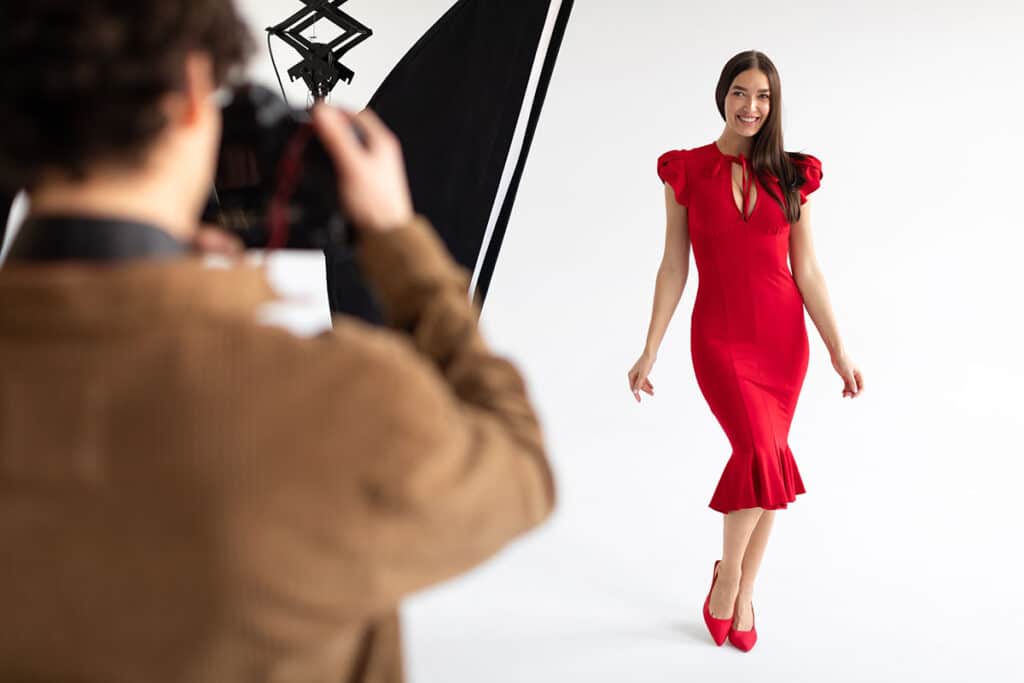
Step 7: Pack Your Essentials
There’s nothing worse than getting to the modelling photoshoot and realising you forgot something important. Here’s a checklist of what to bring with you on the day:
- Makeup touch-up kit: Even if there’s a makeup artist, you might need to do some touch-ups throughout the day, especially if it’s a long shoot. It can also help artists if you bring your own make-up in case they struggle to shade-match you.
- Hairbrush/comb: To keep your hair smooth between outfit changes.
- Deodorant: Shooting under hot lights can be sweaty work (though try to avoid strong, overpowering perfumes as you will be close up with other people all day).
- Comfortable shoes: If you’re wearing heels for part of the shoot, bring flats or slip-ons to wear in between shots (some models bring slippers!)
- Snacks and water: Shoots can be long, so keep yourself fuelled and hydrated.
- Book/magazine/phone: You may have to wait a while between shoots and this can be boring, so bring something to entertain yourself while you wait.
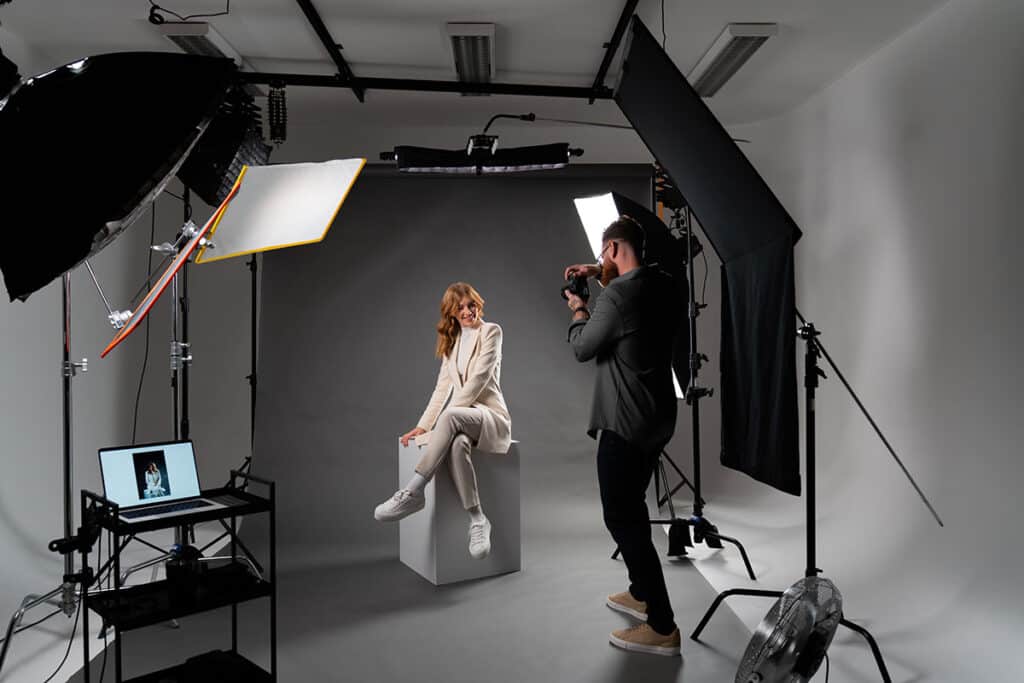
Step 8: Relax and Have Fun
When the day arrives, the best thing you can do is stay relaxed and enjoy the process. Give yourself plenty of time to arrive – it’s always better to arrive early than to arrive late. Make sure you check the location on Google maps and prepare the travel ahead of time. If travelling at peak hours, give yourself even more time; arriving late
Photoshoots are meant to be collaborative, and the best results come when the model is comfortable and confident. Try to relax into the shoot, take the direction on board, and don’t overthink things.
If you feel nervous, remind yourself that everyone on set is there to help you do your best. Don’t be afraid to ask questions, request breaks if needed, or offer your own input if you have ideas for poses or shots.
Remember, your personality is just as important as your look. Don’t be afraid to let it shine through!
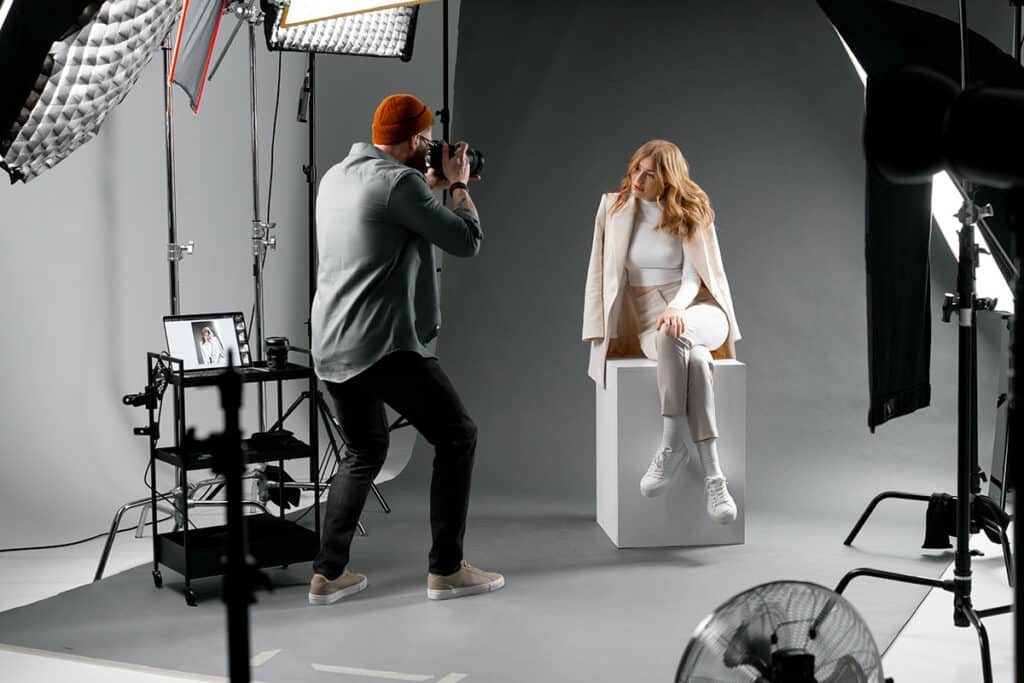
Step 9: Be Professional
Finally, it’s important to be professional throughout the shoot. Arrive on time, be polite, and follow the direction given. Even if the shoot feels casual or relaxed, your attitude on set can leave a lasting impression – positive or negative.
By following these steps, you’ll be ready to step in front of the camera and make every shoot a success.